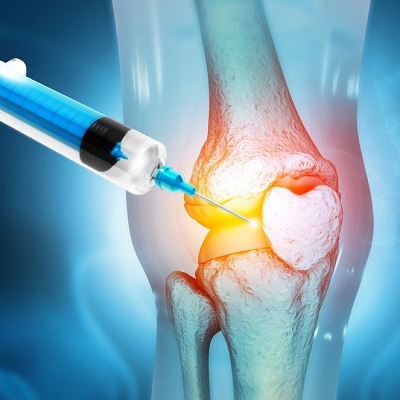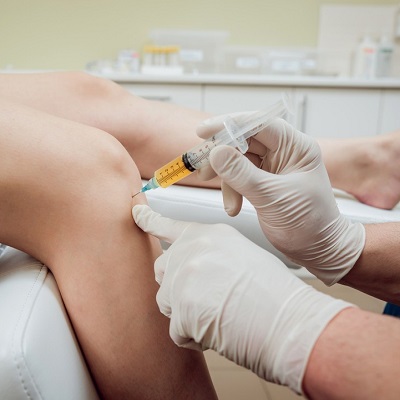
PRP therapy has emerged as a promising and minimally invasive treatment for knee pain and injuries. PRP for knees in Islamabad involves harnessing the healing potential of a patient’s blood to promote tissue repair and alleviate knee discomfort.
This page will explore the benefits, procedures, and availability of PRP therapy for knees, shedding light on how city residents can find relief and improved mobility through this advanced medical treatment. Read more!
Why PRP for Knees?
PRP for knees is the preferred choice for many due to its non-surgical approach and impressive results. This therapy taps into the body’s innate ability to heal using concentrated platelets from the patient’s blood.
It effectively addresses knee issues like osteoarthritis, ligament injuries, and tendonitis, promoting tissue repair, reducing inflammation, and alleviating pain. With its minimally invasive nature and proven effectiveness, PRP therapy for knees offers hope and restored mobility to people without the need for invasive surgery.
Success Rate And Results:
The success rate and results of PRP therapy for knees have garnered attention for their notable effectiveness. While individual experiences may vary, many patients have reported significant improvement in knee pain and functionality.
The regenerative properties of PRP, which stimulate tissue repair and reduce inflammation, contribute to its success. Although it may require several treatments, PRP for knees has become a reliable option for those seeking long-term relief and a return to an active lifestyle.
The duration of results from PRP therapy for knees can vary from person to person and depends on several factors, including the severity of the knee condition, individual healing response, and lifestyle factors. Some patients may experience relief that lasts for several months, while others may enjoy the benefits for a year or more.
Topmost Benefits:
Generally, there are countless benefits of PRP therapy for different purposes. But for knees, the PRP treatment is effective as:
- Minimally Invasive and Non-surgical procedure.
- Faster Recovery with Minimal downtime.
- Reduced Pain and alleviated knee discomfort.
- Utilizes the body’s own resources.
- Few side effects or complications.
- Increased Mobility – Enhances joint function.
- Long-lasting Relief that provides lasting results.
- Effective for various knee conditions.
- Avoids Surgery: An alternative to invasive procedures.
- Non-Allergenic – Uses the patient’s blood.
- Improved Quality of Life and restored daily activities and mobility.
Who Is It For?
It is necessary to be the right candidate for PRP for knees in Islamabad. For this, the practitioner will examine your knee condition and overall health. After that, they will let you know whether this treatment is suitable for you or not. Anyhow, the primary criteria are:
- Individuals with knee osteoarthritis.
- Athletes with sports-related knee injuries.
- Those experiencing chronic knee pain.
- People seeking a non-surgical knee treatment.
- Individuals are looking to enhance knee function.
- Patients want a natural healing option.
How To Prepare?
Before undergoing the procedure, you must prepare yourself for the PRP treatment. The practitioner will provide you with some preparation instructions that you must follow. A few common and basic instructions are:
- Consult a specialist in PRP therapy.
- Discuss the medical history and knee condition.
- Follow pre-treatment instructions from your doctor.
- Stay hydrated in the days leading up to the procedure.
- Avoid blood-thinning medications if advised by your doctor.
- Do not smoke tobacco or drink alcohol.
The Procedure – Step By Step:
The PRP therapy procedure for knees typically involves the following steps:
- A small amount of blood (usually from your arm) is drawn into a sterile tube.
- The collected blood is placed in a centrifuge machine, which spins it at high speeds to separate the platelets from other blood components.
- After centrifugation, the platelet-rich plasma is separated from the rest of the blood, creating a concentrated PRP solution.
- A local anaesthetic or numbing agent may be applied to the knee area to minimize discomfort during the injection.
- The concentrated PRP is carefully injected directly into the affected knee joint using a sterile syringe and needle.
- Depending on your condition and the treatment plan, you may need additional PRP sessions to maintain or enhance the results.
Aftercare Instructions:
After undergoing the procedure of PRP for treating your knees, you have to follow aftercare instructions for better effects. Some of the important aftercare tips are:
- Avoid strenuous activities for a few days.
- Apply ice packs to reduce swelling as needed.
- Take prescribed pain relievers if necessary.
- Perform gentle knee exercises recommended by your provider.
- Stay away from hot tubs or hot baths.
- Consider using a knee brace or compression bandage if advised.
- Follow your provider’s instructions regarding any medications.
- Stay well-hydrated to support healing.
- Report any unusual pain or adverse reactions to your healthcare provider.
- Attend scheduled follow-up appointments to assess progress and discuss further treatment if needed.
Cost of PRP for Knees In Islamabad:
On average, the cost of PRP for Knee treatment in Islamabad may start from PKR 15,000 to PKR 40,000per session. The cost may depend on the several factors:
- The expert practitioner’s fee.
- Clinic’s location and reputation.
- Number of sessions.
- According to the condition of the knees.
- Other additional charges.
Furthermore, if you want to know more about the cost or its factor-related details, contact us or visit our clinic anytime. Our experts will guide you accordingly.
Schedule An Appointment With Us!
Ready to take the first step towards pain relief and improved knee health? Schedule an appointment with Dynamic Clinic Islamabad. Our dedicated team of experts in Islamabad is here to assess your condition, discuss personalized treatment options, and provide top-notch care. Regain your mobility and quality of life with our PRP therapy for knees. Contact us now to book your appointment and embark on a journey to pain-free living.


